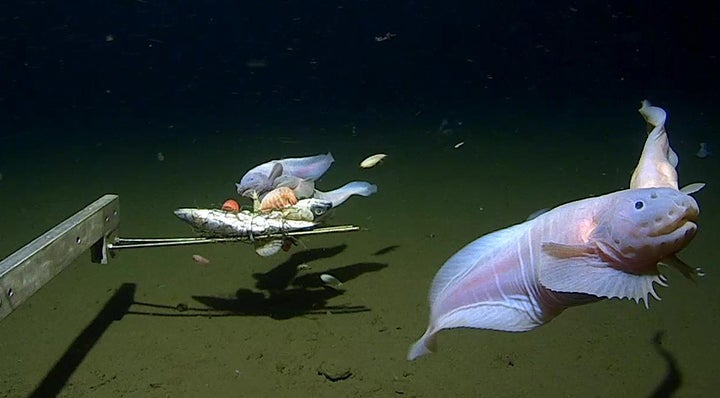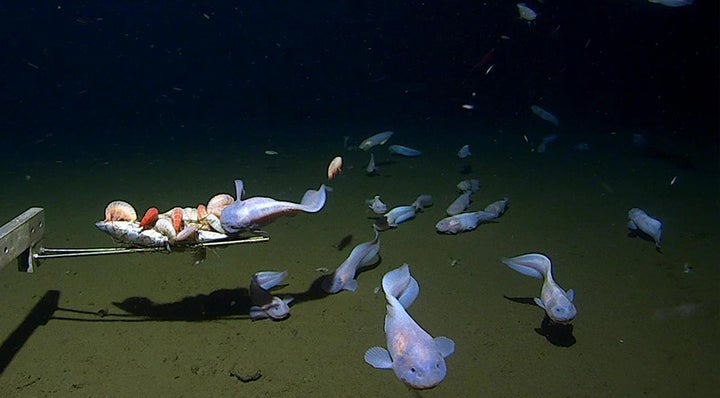There it was: A milky, undulating snailfish, feasting on a baited camera.
There are more than 300 known species of the tadpole-like creatures found around the world, but this one was special. Five miles beneath the ocean’s surface — about the height of Mount Everest with a bit of the top cut off — this snailfish was thriving.
Researchers said this week the footage shows the deepest fish ever seen on camera, 8,336 meters, or more than 27,000 feet, below the waves. The video was captured during a two-month expedition studying deep trenches around Japan last August, as part of a broader, decadelong project to study the planet’s deepest fish populations.
Baited cameras were placed on unmanned submersibles, attracting the snailfish and adding new understanding to how creatures survive in the planet’s most inhospitable zones. At those depths, no light penetrates the waters and any food has made the long float down from the upper reaches of the sea. The pressure is more than 800 times that at sea level.
Professor Alan Jamieson, the chief scientist of the expedition and a founder of the deep sea research center at the University of Western Australia, told HuffPost that many people tend to overlook the deep ocean, focusing instead on the “thin veneer” of 150 feet or so at the surface. Researcher are now playing a game of catch-up, he said, battling myths the ocean floor is a lifeless darkness full of monsters.


“If you look at the scale of the deep sea, it’s 65% to 70% of planet Earth,” Jamieson, who has ventured more than 10,000 meters deep himself several times, said. “Historically we tell ourselves that the deep sea doesn’t matter. But it’s not just this other dimension.”
The depths are supremely impacted by what humanity is doing above the water: Plastic pollution on the surface doesn’t disappear, it sinks. Overfishing removes animal stocks that would naturally die and sink, too, feeding populations of deep sea creatures. And climate change alters ocean temperatures and acidification, changing the properties of the ocean floor.
Jamieson added much of the awe of the deep is being missed by society, but hoped the humble snailfish would shine a light on the unknown lurking in the darkest parts of our world.
“Exploration is what makes human beings human beings,” he said. “Nobody questions why people go into space, but they always wonder why you want to go to the bottom of the ocean.”

